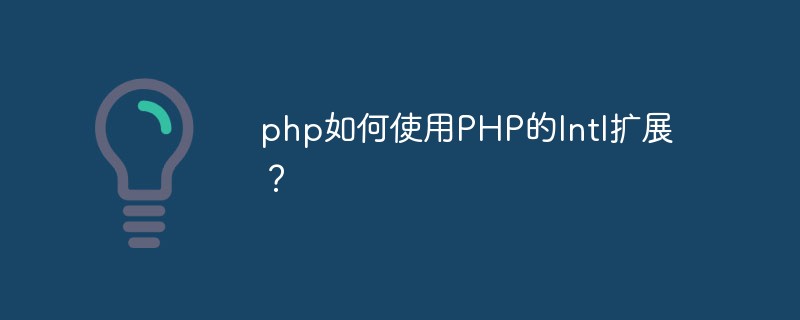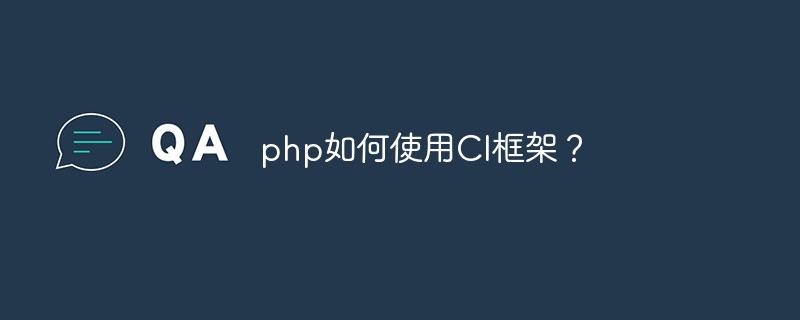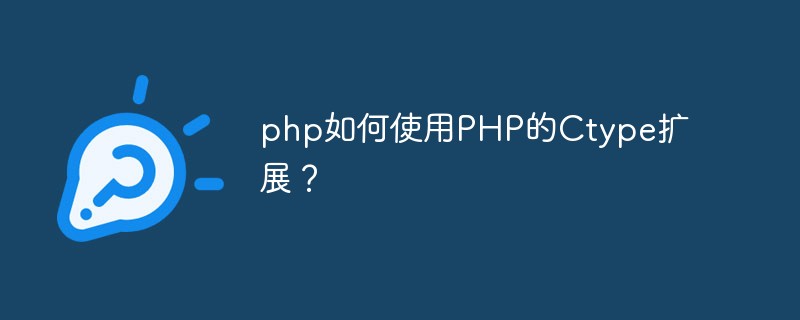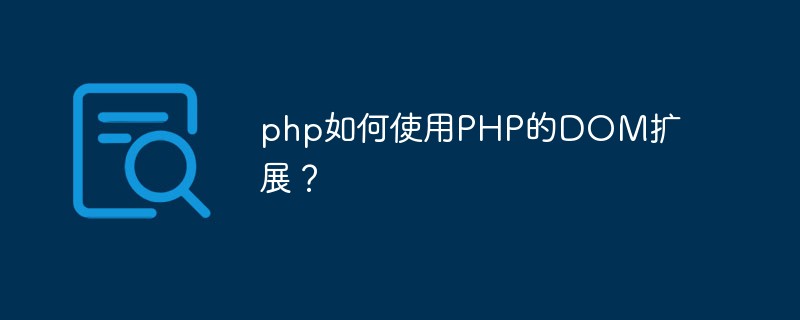 Backend Development
Backend Development PHP Tutorial
PHP Tutorial Detailed explanation of the definition and usage of PHP exception handling
Detailed explanation of the definition and usage of PHP exception handlingThis article mainly introduces the definition and usage of PHP exception handling. It analyzes the definition, usage and related precautions of PHP exception handling in more detail. Friends in need can refer to it
The details are as follows:
<?php
//php5提供了基本的异常处理类,可直接使用 ,不需要自己再定义
// class Exception
// {
// protected $message = 'Unknown exception'; // 异常信息
// protected $code = 0; // 用户自定义异常代码
// protected $file; // 发生异常的文件名
// protected $line; // 发生异常的代码行号
// function __construct($message = null, $code = 0);
// final function getMessage(); // 返回异常信息
// final function getCode(); // 返回异常代码
// final function getFile(); // 返回发生异常的文件名
// final function getLine(); // 返回发生异常的代码行号
// final function getTrace(); // backtrace() 数组
// final function getTraceAsString(); // 已格成化成字符串的 getTrace() 信息
// /* 可重载的方法 */
// function __toString(); // 可输出的字符串
// }
?>
<?php
//定义一个顶级异常处理
function my_exception($e){
echo "我是顶级异常处理".$e->getMessage();
}
//修改默认的顶级异常处理函数(器)
set_exception_handler("my_exception");
//我们使用异常机制
try{
addUser("shunping");
updateUser("xiaoming1");
}
//catch用来 捕获异常, Exception 是异常类(是php定义好一个类)
catch(Exception $e){
//返回异常信息
echo "返回异常信息(失败信息) =".$e->getMessage()."<br/>";
echo "返回异常代码 =".$e->getCode()."<br/>";
echo "返回发生异常的文件名 =".$e->getFile()."<br/>";
echo "返回发生异常的代码行号 =".$e->getLine()."<br/>";
//echo " =".$e->getTrace()."<br/>"; // backtrace() 数组
//可以继续抛出,这时将会启动php默认的异常处理器来处理
//你也可以自己定义一个顶级异常处理器,对其进行处理
throw $e;
}
function addUser($username){
if($username=="shunping"){
//添加ok
echo "ok1";
}else{
//添加error
//抛出异常.
throw new Exception("添加失败");
}
}
function updateUser($username){
if($username=="xiaoming"){
//正常修改
echo "ok2";
}else{
//平抛出异常
throw new Exception("修改失败");
}
}
?>
## Notes on using exceptions:
From the above case, we can see that usingtry{
//代码
}catch(Exception $e){
//对异常处理
}
can more effectively control errors. Therefore, it is widely used in development.1. When an exception is caught, the subsequent code in the try{} block will not continue to execute. 2. If an exception occurs but you do not catch it, an
Uncaught will be prompted. Exception.(System.)<br>3. When catching an exception, you can handle it or not. If you don’t handle it, you can
throw new Exception("information");
class MyException extends Exception {
}
5. Use multiple catch code blocks to catch different types of exceptions
try{
//代码....
//第一句话
//第二句话
}catch(PDOException $e){
//
}catch(Exception $e){
|
}
6. You can also simply use Exception captureCode description:
<?php
//定义了一个异常
class MyException1 extends Exception{
}
class MyException2 extends Exception{
}
function A(){
throw new MyException1("a");
}
function B(){
throw new MyException2("b")
}
function C(){
try{
A();//抛出MyException1
B();//抛出MyException2
}catch(Exception1 $e1){
$e1->getMessage();
}catch(Exception2 $e2){
$e2->getMesage();
}
}
?>
Exception rules
Code that requires exception handling should be placed in a try code block to catch potential exceptions.Each try or throw code block must have at least one corresponding catch code block.
Use multiple catch code blocks to catch different types of exceptions.
Exceptions can be thrown (thrown again) in the catch code block within the try code block.
In short: if an exception is thrown, you must catch it. Or use a top-level exception handler.
If it is not thrown, even if there is an exception, it will not be caught or handled
PHP exception handlingSharing error handling methods
What isPHP exception handling
## Customization of PHP exception handler
The above is the detailed content of Detailed explanation of the definition and usage of PHP exception handling. For more information, please follow other related articles on the PHP Chinese website!
 php如何使用PHP的Intl扩展?May 31, 2023 pm 08:10 PM
php如何使用PHP的Intl扩展?May 31, 2023 pm 08:10 PMPHP的Intl扩展是一个非常实用的工具,它提供了一系列国际化和本地化的功能。本文将介绍如何使用PHP的Intl扩展。一、安装Intl扩展在开始使用Intl扩展之前,需要安装该扩展。在Windows下,可以在php.ini文件中打开该扩展。在Linux下,可以通过命令行安装:Ubuntu/Debian:sudoapt-getinstallphp7.4-
 如何使用CakePHP中的数据库查询构造器?Jun 04, 2023 am 09:02 AM
如何使用CakePHP中的数据库查询构造器?Jun 04, 2023 am 09:02 AMCakePHP是一个开源的PHPMVC框架,它广泛用于Web应用程序的开发。CakePHP具有许多功能和工具,其中包括一个强大的数据库查询构造器,用于交互性能数据库。该查询构造器允许您使用面向对象的语法执行SQL查询,而不必编写繁琐的SQL语句。本文将介绍如何使用CakePHP中的数据库查询构造器。建立数据库连接在使用数据库查询构造器之前,您首先需要在Ca
 php如何使用CI框架?Jun 01, 2023 am 08:48 AM
php如何使用CI框架?Jun 01, 2023 am 08:48 AM随着网络技术的发展,PHP已经成为了Web开发的重要工具之一。而其中一款流行的PHP框架——CodeIgniter(以下简称CI)也得到了越来越多的关注和使用。今天,我们就来看看如何使用CI框架。一、安装CI框架首先,我们需要下载CI框架并安装。在CI的官网(https://codeigniter.com/)上下载最新版本的CI框架压缩包。下载完成后,解压缩
 php如何使用PHP的Ctype扩展?Jun 03, 2023 pm 10:40 PM
php如何使用PHP的Ctype扩展?Jun 03, 2023 pm 10:40 PMPHP是一种非常受欢迎的编程语言,它允许开发者创建各种各样的应用程序。但是,有时候在编写PHP代码时,我们需要处理和验证字符。这时候PHP的Ctype扩展就可以派上用场了。本文将就如何使用PHP的Ctype扩展展开介绍。什么是Ctype扩展?PHP的Ctype扩展是一个非常有用的工具,它提供了各种函数来验证字符串中的字符类型。这些函数包括isalnum、is
 Vue 中的单文件组件是什么,如何使用?Jun 10, 2023 pm 11:10 PM
Vue 中的单文件组件是什么,如何使用?Jun 10, 2023 pm 11:10 PM作为一种流行的前端框架,Vue能够提供开发者一个便捷高效的开发体验。其中,单文件组件是Vue的一个重要概念,使用它能够帮助开发者快速构建整洁、模块化的应用程序。在本文中,我们将介绍单文件组件是什么,以及如何在Vue中使用它们。一、单文件组件是什么?单文件组件(SingleFileComponent,简称SFC)是Vue中的一个重要概念,它
 php如何使用PHP的DOM扩展?May 31, 2023 pm 06:40 PM
php如何使用PHP的DOM扩展?May 31, 2023 pm 06:40 PMPHP的DOM扩展是一种基于文档对象模型(DOM)的PHP库,可以对XML文档进行创建、修改和查询操作。该扩展可以使PHP语言更加方便地处理XML文件,让开发者可以快速地实现对XML文件的数据分析和处理。本文将介绍如何使用PHP的DOM扩展。安装DOM扩展首先需要确保PHP已经安装了DOM扩展,如果没有安装需要先安装。在Linux系统中,可以使用以下命令来安
 php如何使用PHP的geoip扩展?Jun 01, 2023 am 09:13 AM
php如何使用PHP的geoip扩展?Jun 01, 2023 am 09:13 AMPHP是一种流行的服务器端脚本语言,它可以处理网页上的动态内容。PHP的geoip扩展可以让你在PHP中获取有关用户位置的信息。在本文中,我们将介绍如何使用PHP的geoip扩展。什么是PHP的GeoIP扩展?PHP的geoip扩展是一个免费的、开源的扩展,它允许你获取有关IP地址和位置信息的数据。该扩展可以与GeoIP数据库一起使用,这是一个由MaxMin
 php如何使用CI4框架?Jun 01, 2023 pm 02:40 PM
php如何使用CI4框架?Jun 01, 2023 pm 02:40 PMPHP是一种广泛使用的服务器端脚本语言,而CodeIgniter4(CI4)是一个流行的PHP框架,它提供了一种快速而优秀的方法来构建Web应用程序。在这篇文章中,我们将通过引导您了解如何使用CI4框架,来使您开始使用此框架来开发出众的Web应用程序。1.下载并安装CI4首先,您需要从官方网站(https://codeigniter.com/downloa


Hot AI Tools

Undresser.AI Undress
AI-powered app for creating realistic nude photos

AI Clothes Remover
Online AI tool for removing clothes from photos.

Undress AI Tool
Undress images for free

Clothoff.io
AI clothes remover

AI Hentai Generator
Generate AI Hentai for free.

Hot Article

Hot Tools

MantisBT
Mantis is an easy-to-deploy web-based defect tracking tool designed to aid in product defect tracking. It requires PHP, MySQL and a web server. Check out our demo and hosting services.

Atom editor mac version download
The most popular open source editor

Dreamweaver Mac version
Visual web development tools

Notepad++7.3.1
Easy-to-use and free code editor

SublimeText3 English version
Recommended: Win version, supports code prompts!





